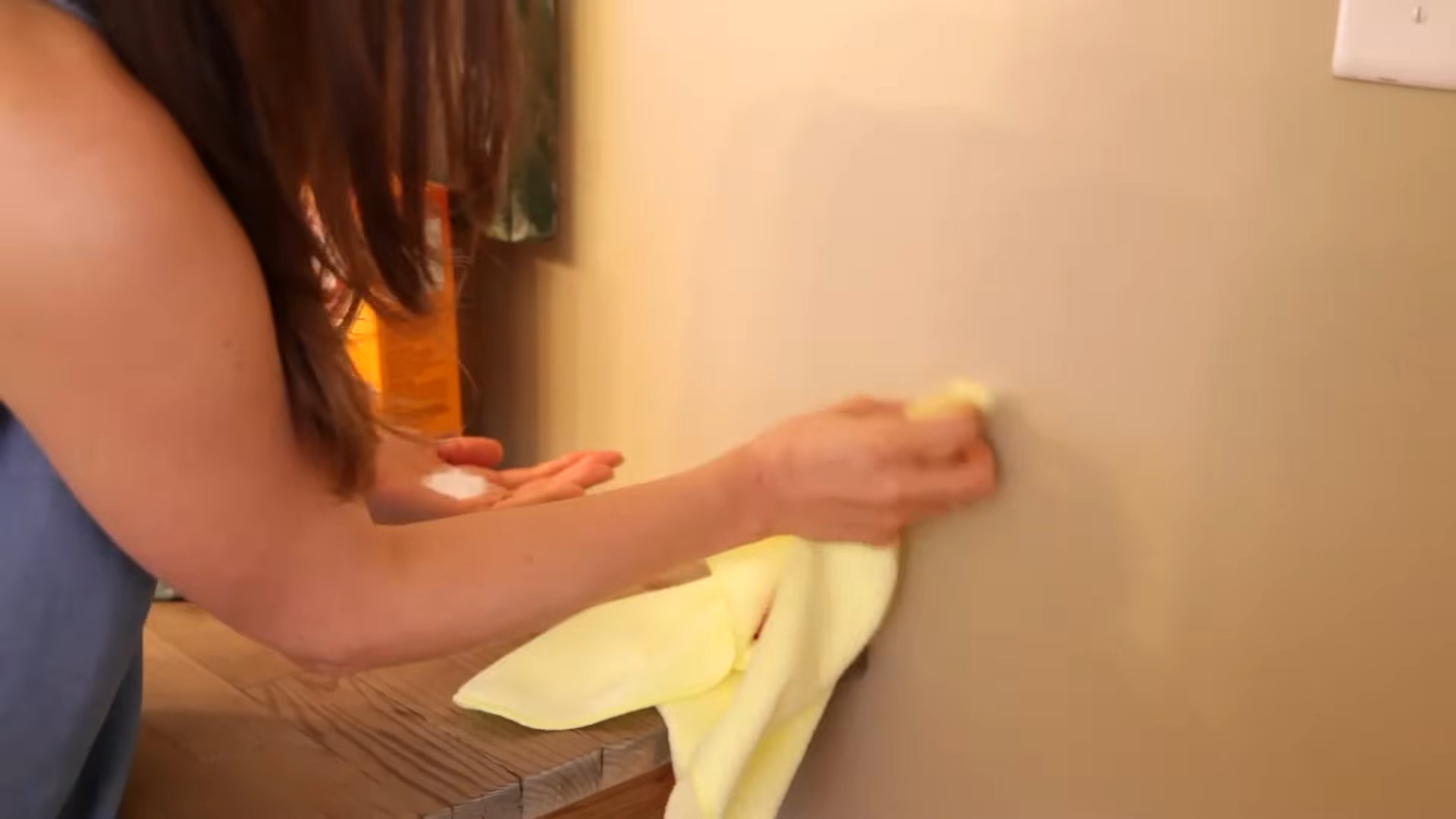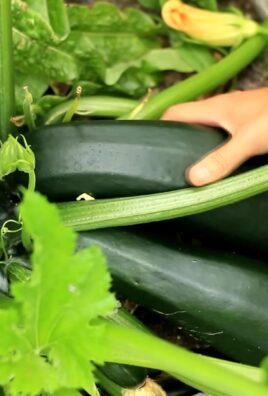Grow Asparagus Indoors? Absolutely! Imagine harvesting fresh, tender asparagus spears right from your kitchen, even when the snow is falling outside. Sounds like a dream, right? Well, it’s a dream that can become a delicious reality with a little know-how and some simple DIY techniques.
Asparagus, a springtime delicacy enjoyed for centuries, has a rich history dating back to ancient Greece and Rome, where it was prized for its medicinal properties and unique flavor. While traditionally grown outdoors, modern gardening innovations have opened up exciting possibilities for indoor cultivation.
Why should you learn to grow asparagus indoors? For starters, it extends your growing season, allowing you to enjoy this nutritious vegetable year-round. Plus, it’s a fantastic way to add a touch of green to your home and connect with nature, even in urban environments. Let’s face it, store-bought asparagus just doesn’t compare to the flavor of freshly harvested, homegrown spears. In this article, I’ll share my favorite DIY tricks and hacks to help you successfully cultivate asparagus indoors, from selecting the right varieties to providing optimal growing conditions. Get ready to embark on a rewarding gardening adventure!

Growing Asparagus Indoors: A Comprehensive DIY Guide
Okay, so you want to grow asparagus indoors? Awesome! It’s totally doable, though it requires a little patience and dedication. Asparagus isn’t exactly the easiest plant to cultivate indoors, but the reward of fresh, homegrown spears in the middle of winter is absolutely worth the effort. I’m going to walk you through everything you need to know, step-by-step, to successfully grow asparagus inside your home.
Choosing the Right Asparagus Variety
First things first, not all asparagus varieties are created equal, especially when it comes to indoor growing. You’ll want to choose a variety that’s known for its vigor and adaptability.
* ‘Jersey Knight’: This is a popular choice for its high yield and disease resistance. It’s a male variety, which means it doesn’t produce seeds, so it puts all its energy into spear production.
* ‘Purple Passion’: This variety is not only delicious but also visually stunning with its deep purple spears. It tends to be sweeter than green varieties.
* ‘Mary Washington’: A classic heirloom variety that’s known for its reliability and good flavor.
I personally recommend starting with ‘Jersey Knight’ if you’re a beginner, as it’s generally considered the easiest to grow.
Gathering Your Supplies
Before you even think about planting, you need to make sure you have all the necessary supplies. Trust me, it’s much easier to gather everything beforehand than to run to the store mid-planting.
* Asparagus Crowns: These are the dormant root systems of asparagus plants. You can purchase them online or at your local garden center. Make sure they look healthy and plump, not dried out or shriveled.
* Large Containers: Asparagus needs plenty of room to grow, so you’ll need containers that are at least 12 inches deep and 12 inches wide. Larger is always better! I prefer using plastic containers because they retain moisture better than terracotta.
* High-Quality Potting Mix: Don’t skimp on the potting mix! Use a well-draining mix that’s rich in organic matter. A mix specifically formulated for vegetables is ideal. Avoid using garden soil, as it can compact and suffocate the roots.
* Grow Lights: Asparagus needs a lot of light, especially indoors. Invest in a good set of grow lights to supplement natural sunlight. LED grow lights are energy-efficient and provide the full spectrum of light that plants need.
* Fertilizer: A balanced, slow-release fertilizer will provide your asparagus plants with the nutrients they need to thrive. Look for a fertilizer with an NPK ratio of around 10-10-10.
* Watering Can or Hose: You’ll need a way to water your plants regularly. A watering can with a long spout is helpful for reaching the soil without getting the foliage wet.
* Pruning Shears or Scissors: These will come in handy for trimming any dead or damaged foliage.
* Optional: A humidity tray can help increase the humidity around your plants, which they’ll appreciate.
Planting Your Asparagus Crowns
Alright, now for the fun part – planting! This is where your asparagus journey really begins.
1. Soak the Crowns: Before planting, soak the asparagus crowns in water for about an hour. This will help rehydrate them and give them a good start.
2. Prepare the Containers: Fill the containers with potting mix, leaving about 2-3 inches of space at the top.
3. Create a Mound: In the center of each container, create a small mound of potting mix. This is where you’ll place the asparagus crown.
4. Position the Crown: Place the asparagus crown on top of the mound, spreading the roots out around it. Make sure the crown is positioned so that the buds (the small, pointy growths) are facing upwards.
5. Cover the Crown: Gently cover the crown with potting mix, leaving the tips of the buds exposed. Don’t bury the crown too deep, as this can prevent it from sprouting.
6. Water Thoroughly: Water the containers thoroughly until water drains out of the bottom. This will help settle the soil and ensure that the roots are well-hydrated.
7. Label Your Containers: It’s always a good idea to label your containers with the variety of asparagus you’re growing and the date you planted them.
Providing the Right Environment
Asparagus needs specific conditions to thrive indoors. Mimicking their natural environment as closely as possible will increase your chances of success.
* Light: Asparagus needs at least 6-8 hours of direct sunlight per day. If you don’t have a sunny window, you’ll need to supplement with grow lights. Position the grow lights about 6-12 inches above the plants.
* Temperature: Asparagus prefers temperatures between 65-75°F (18-24°C) during the day and slightly cooler temperatures at night. Avoid placing your plants near drafts or heating vents.
* Humidity: Asparagus likes humidity, so aim for a humidity level of around 50-60%. You can increase humidity by using a humidifier, placing a humidity tray under the plants, or misting them regularly.
* Watering: Water your asparagus plants regularly, keeping the soil consistently moist but not waterlogged. Allow the top inch of soil to dry out between waterings. Overwatering can lead to root rot, so be careful not to overdo it.
* Fertilizing: Fertilize your asparagus plants every 2-3 weeks with a balanced, slow-release fertilizer. Follow the instructions on the fertilizer package.
Caring for Your Asparagus Plants
Once your asparagus plants are established, you’ll need to provide ongoing care to keep them healthy and productive.
* Weeding: Keep the containers free of weeds, as they can compete with your asparagus plants for nutrients and water.
* Pruning: As the asparagus plants grow, they’ll produce tall, fern-like foliage. Trim any dead or damaged foliage regularly.
* Pest Control: Keep an eye out for pests such as aphids, spider mites, and asparagus beetles. If you notice any pests, treat them with an appropriate insecticide or insecticidal soap.
* Rotating: Rotate your asparagus plants regularly to ensure that they receive even light exposure.
* Dormancy: Asparagus plants need a period of dormancy each year to rest and recharge. In the fall, the foliage will start to turn yellow and die back. At this point, stop watering and fertilizing the plants and move them to a cool, dark location for about 2-3 months. This will mimic the winter dormancy period that asparagus plants experience outdoors. After the dormancy period, you can bring the plants back into the light and resume watering and fertilizing.
Harvesting Your Asparagus Spears
The most exciting part of growing asparagus is, of course, harvesting the spears! However, it’s important to be patient and not harvest too early.
* First Year: Do not harvest any spears during the first year. This will allow the plants to establish a strong root system.
* Second Year: You can harvest a few spears during the second year, but only for a short period of time (about 2-3 weeks).
* Third Year and Beyond: In the third year and beyond, you can harvest spears for a longer period of time (about 6-8 weeks).
* Harvesting Technique: To harvest asparagus spears, use a sharp knife to cut them off at ground level. Harvest spears when they are about 6-8 inches tall and before the tips start to open up.
* Post-Harvest Care: After harvesting, continue to water and fertilize your asparagus plants to encourage further growth.
Troubleshooting Common Problems
Even with the best care, you may encounter some problems when growing asparagus indoors. Here are some common issues and how to address them:
* Yellowing Foliage: This can be caused by overwatering, underwatering, nutrient deficiencies, or pests. Check the soil moisture and adjust your watering accordingly. Fertilize the plants regularly and inspect them for pests.
* Stunted Growth: This can be caused by insufficient light, poor soil, or root rot. Make sure your plants are getting enough light and that the soil is well-draining. Avoid overwatering.
* Thin Spears: This can be caused by insufficient nutrients or overcrowding. Fertilize the plants regularly and thin out the spears if they are too crowded.
* Pests: Aphids, spider mites, and asparagus beetles are common pests that can attack asparagus plants. Treat them with an appropriate insecticide or insecticidal soap.
Enjoying Your Homegrown Asparagus
Congratulations! You’ve successfully grown asparagus indoors. Now it’s time to enjoy the fruits (or rather, spears) of your labor. Freshly

Conclusion
So, there you have it! Growing asparagus indoors might seem like a challenge reserved for seasoned gardeners, but with a little patience and the right approach, you can absolutely cultivate your own delicious spears right in the comfort of your home. This DIY trick isn’t just about saving money; it’s about connecting with your food, understanding its growth cycle, and enjoying the unparalleled freshness of homegrown produce. Imagine the satisfaction of harvesting your own asparagus for a spring frittata or a simple grilled side dish – the flavor is simply unmatched.
Why is this a must-try? Because it offers a unique opportunity to enjoy fresh asparagus year-round, regardless of your climate or access to outdoor gardening space. It’s a rewarding project that brings a touch of nature indoors and allows you to control the growing environment, ensuring the best possible flavor and quality. Plus, it’s a fantastic conversation starter!
Looking for variations? Consider experimenting with different asparagus varieties. While ‘Jersey Knight’ is a popular choice for its high yield and disease resistance, you might also try ‘Purple Passion’ for its beautiful color and sweeter flavor. You can also explore different container sizes and growing mediums to find what works best for your space and resources. Some gardeners have even successfully used hydroponic systems for indoor asparagus cultivation, offering a soilless alternative. Remember to adjust your watering and fertilizing schedule based on the specific needs of your chosen variety and growing method.
Don’t be afraid to get creative with your setup! If you’re short on space, consider vertical gardening solutions like stacking planters or wall-mounted containers. You can also use grow lights to supplement natural sunlight, especially during the darker months. The key is to provide your asparagus with the conditions it needs to thrive: plenty of light, well-drained soil, and consistent moisture.
We wholeheartedly encourage you to try this DIY trick and experience the joy of growing asparagus indoors. It’s a project that requires patience, but the rewards are well worth the effort. And most importantly, don’t forget to share your experience with us! We’d love to hear about your successes, challenges, and any tips you’ve discovered along the way. Share your photos and stories on social media using #IndoorAsparagus or leave a comment below. Let’s build a community of indoor asparagus growers and inspire others to embrace the joys of homegrown food! This is a great way to enjoy fresh, homegrown **asparagus**.
Frequently Asked Questions (FAQ)
1. What is the best time of year to start growing asparagus indoors?
The best time to start growing asparagus indoors depends on whether you’re starting from seed or crowns. If you’re starting from seed, begin the process indoors about 12-14 weeks before the last expected frost. This allows the seedlings to develop a strong root system before transplanting them into larger containers. If you’re starting from crowns, you can plant them indoors in late winter or early spring. The key is to ensure that the crowns have had a period of dormancy (cold treatment) before planting. This dormancy period is crucial for breaking the crown’s natural rest cycle and stimulating growth. You can achieve this by storing the crowns in the refrigerator for several weeks before planting.
2. How much light does indoor asparagus need?
Asparagus requires a significant amount of light to thrive, ideally 6-8 hours of direct sunlight per day. If you don’t have a south-facing window that provides sufficient sunlight, you’ll need to supplement with grow lights. Full-spectrum LED grow lights are an excellent option, as they provide the necessary wavelengths of light for healthy plant growth. Position the grow lights a few inches above the asparagus ferns and adjust the height as the plants grow. Monitor the plants closely for signs of insufficient light, such as leggy growth or pale leaves. If you notice these signs, increase the intensity or duration of the grow lights.
3. What type of soil is best for growing asparagus indoors?
Asparagus prefers well-drained, slightly acidic soil with a pH between 6.0 and 7.0. A good potting mix for indoor asparagus should consist of a blend of peat moss, perlite, and vermiculite. This combination provides good drainage, aeration, and moisture retention. Avoid using heavy clay soils, as they can become waterlogged and lead to root rot. You can also amend the potting mix with compost or well-rotted manure to provide additional nutrients. Before planting, test the soil pH using a soil testing kit and adjust it if necessary.
4. How often should I water my indoor asparagus?
Water asparagus regularly, keeping the soil consistently moist but not waterlogged. Check the soil moisture level by inserting your finger about an inch into the soil. If the soil feels dry to the touch, it’s time to water. Water deeply, allowing the excess water to drain out of the bottom of the container. Avoid overwatering, as this can lead to root rot. During the dormant period in the fall and winter, reduce watering frequency.
5. How do I fertilize my indoor asparagus?
Asparagus is a heavy feeder and requires regular fertilization to produce healthy spears. Use a balanced fertilizer with an NPK ratio of 10-10-10 or 14-14-14. Apply the fertilizer according to the package instructions, typically every 2-3 weeks during the growing season. You can also use a liquid fertilizer diluted to half strength. Avoid over-fertilizing, as this can burn the roots. In the fall and winter, reduce or stop fertilizing during the dormant period.
6. How long does it take to harvest asparagus spears indoors?
It typically takes 2-3 years from planting crowns before you can begin harvesting asparagus spears. During the first year, allow the plants to establish a strong root system and do not harvest any spears. In the second year, you can harvest a few spears, but limit the harvest to a few weeks. In the third year and beyond, you can harvest spears for a longer period, typically 6-8 weeks. To harvest, snap off the spears at ground level when they are about 6-8 inches tall.
7. How do I deal with pests and diseases on my indoor asparagus?
Indoor asparagus is generally less susceptible to pests and diseases than outdoor asparagus. However, common pests such as aphids, spider mites, and asparagus beetles can still be a problem. Inspect your plants regularly for signs of infestation and take action promptly. You can control aphids and spider mites by spraying the plants with insecticidal soap or neem oil. Asparagus beetles can be handpicked or controlled with insecticides. To prevent fungal diseases, ensure good air circulation and avoid overwatering. If you notice any signs of disease, remove the affected foliage and treat the plants with a fungicide.
8. What do I do with my asparagus plants during the dormant period?
Asparagus plants require a dormant period in the fall and winter to rest and rejuvenate. During this time, the ferns will turn yellow and die back. Cut back the dead foliage to ground level and reduce watering frequency. You can also move the plants to a cooler location, such as a garage or basement, where the temperature is between 40-50°F (4-10°C). This cold treatment helps to break the crown’s natural rest cycle and stimulate growth in the spring. After a few months of dormancy, gradually increase watering and move the plants back to a sunny location to begin the next growing season.
9. Can I grow asparagus in a container indefinitely?
Yes, you can grow asparagus in a container indefinitely, provided you provide the plants with the necessary care and attention. Repot the asparagus plants every 2-3 years into a larger container with fresh potting mix. This will provide the plants with more room to grow and replenish the nutrients in the soil. You may also need to divide the crowns every few years to prevent overcrowding.
10. What are some common mistakes to avoid when growing asparagus indoors?
Some common mistakes to avoid when growing asparagus indoors include:
* Not providing enough light.
* Overwatering or underwatering.
* Using poor-quality soil.
* Not fertilizing regularly.
* Harvesting spears too early.
* Ignoring pests and diseases.
* Not providing a dormant period.
By avoiding these mistakes and following the tips outlined in this guide, you can successfully grow asparagus indoors and enjoy fresh, homegrown spears year-round.





Leave a Comment